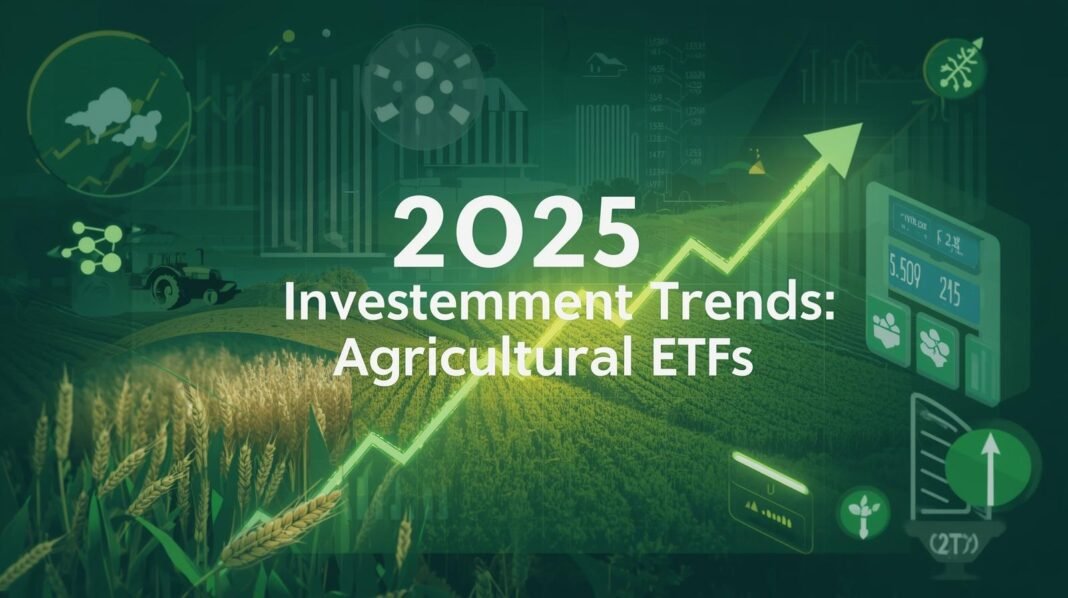The year 2025 has brought renewed attention to agricultural exchange-traded funds (ETFs). As investors search for resilient sectors amid global uncertainty, agriculture has emerged as a compelling theme.
With food security high on policy agendas, weather risks reshaping yields, and agribusiness equities delivering double-digit gains, agricultural ETFs are increasingly being viewed as more than just defensive plays.
But the key question remains: are agricultural ETFs truly the new growth story of 2025?
Strong Performance in Agribusiness Equities
Among agricultural ETFs, agribusiness-focused funds are leading the pack. The VanEck Agribusiness ETF (MOO), which holds industry giants like Deere, Zoetis, Corteva, and Archer Daniels Midland, has delivered double-digit gains in 2025, outpacing many cyclical sectors.
This surge is driven by strong demand for crop science innovations, precision agriculture, and animal health solutions—areas that remain essential regardless of broader economic slowdowns.
By contrast, broad commodity baskets like the Invesco DB Agriculture Fund (DBA) have only posted modest single-digit gains, reflecting the drag from mixed crop prices and the costs associated with rolling futures contracts.
Still, single-crop ETFs such as wheat (WEAT) and corn (CORN) have seen notable spikes this year, benefiting from tighter supply and weather-related concerns.
Food Security and Rising Prices
One of the biggest tailwinds for agricultural ETFs in 2025 is food security. The FAO Food Price Index rose in mid-2025, highlighting strong price momentum in categories such as meat and vegetable oils.
While prices remain below the historic highs of 2022, the trend points toward renewed inflationary pressures in the global food system.
This environment favors companies with pricing power in agricultural inputs and processing. For investors, it reinforces the case for holding agribusiness equities, which are better positioned to capture sustained earnings growth than futures-based ETFs.
Weather Risks as a Market Driver
The role of climate cannot be overstated. In 2025, the ENSO cycle remains a central factor for agricultural investors. Forecasts point to ENSO-neutral conditions now, with the potential for a brief La Niña later in the year.
Such weather patterns can disrupt rainfall and crop yields, adding volatility to agricultural markets.
For ETF investors, this translates to opportunities in single-crop funds like WEAT and CORN, which are highly sensitive to supply shocks. However, it also underscores the importance of diversification—since not all commodities respond equally to weather disruptions.
Comparing Ag to Tech in 2025
While agricultural ETFs are gaining ground, they are not yet outpacing technology ETFs in 2025. Emerging market internet ETFs have surged more than 20% year-to-date, while U.S. technology ETFs continue to deliver strong double-digit returns.
This comparison highlights an important distinction: agricultural ETFs are less about hypergrowth and more about resilience and diversification.
They offer a hedge against inflation, geopolitical risk, and climate uncertainty—factors that are becoming increasingly relevant in global markets.
Equity vs. Commodity ETFs: Choosing the Right Exposure
Investors considering agricultural ETFs face two main choices:
-
Agribusiness equity ETFs (like MOO): These funds offer exposure to companies involved in machinery, crop science, and processing. They benefit from long-term demand growth and often pay dividends.
-
Commodity ETFs (like DBA, WEAT, CORN): These track futures contracts for agricultural products. They are highly sensitive to short-term price movements but can be eroded by roll costs and volatility.
In 2025, equity ETFs are delivering more consistent growth, while commodity ETFs work best for tactical exposure around specific catalysts such as weather shocks or trade disruptions.
Outlook: Is Agriculture the New Growth Story?
Agricultural ETFs may not replace technology as the dominant growth engine in global markets, but they are carving out a new role as a strategic growth-adjacent theme. The sector benefits from powerful structural drivers:
-
Rising global food demand
-
Biofuel expansion
-
Climate-driven supply risks
-
Government policies prioritizing food security
For investors, agricultural ETFs in 2025 represent both a growth opportunity and a portfolio diversifier.
Rather than asking if agriculture will beat tech, the better question is how ag exposure can complement traditional growth sectors to build resilience.
Conclusion
Agricultural ETFs are indeed emerging as one of the most interesting investment trends of 2025.
With agribusiness equities showing strong returns, food prices firming, and weather uncertainty adding volatility, the sector is attracting investors looking for both stability and opportunity.
While agriculture may not yet rival technology’s explosive growth, its role as a sustainable, necessity-driven investment theme is clearer than ever.
For forward-looking portfolios, agricultural ETFs could very well be the quiet growth story of 2025.
Also Read
Top Agriculture Stocks to Watch in 2025: Global Picks for a Growing Sector
Top 5 Features of the Slate Truck That Make It a Game-Changer
